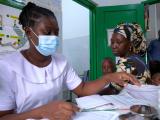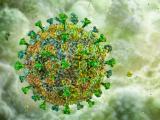Aug 21, 2012
Salmonella outbreak from live chicks sickens 20 more in 10 states
Twenty more people have been sickened in a Salmonella outbreak linked to live chicks from an Ohio mail-order hatchery, raising the total to 163, the US Centers for Disease Control and Prevention (CDC) said in an update yesterday. The outbreak, originally announced by the CDC in late May and one of three ongoing Salmonella outbreaks involving live chicks and other poultry, involves three strains: Infantis, Newport, and Lille. In its update, the CDC said the new cases are from 10 states: Illinois, Massachusetts, Maryland, New York, North Carolina, Ohio, Pennsylvania, South Carolina, Vermont, and West Virginia. The latest illness onset was Jul 31. A second death has been reported in the outbreak—an individual from Maryland, raising the total to two. However, the CDC said it's not clear if the Salmonella infections contributed to the deaths. The outbreak has been linked to exposure to live chicks and ducks from Mt. Health Hatchery in Ohio, a mail-order firm that was linked to a 2011 outbreak of Salmonella Altona and Salmonella Johannesburg, according to the CDC. It added that the Ohio Department of Agriculture inspected the hatchery in May and made recommendations for improvements. Federal officials are also following up on two other Salmonella outbreaks linked to live mail-order poultry, a Salmonella Montevideo outbreak linked to a Missouri hatchery that has so far sickened 76 people and one involving Salmonella Hadar liked to an Idaho hatchery that has sickened 37.
Aug 20 CDC outbreak update
Ebola cases in Congo rise in number
A total of 15 cases (13 probable and 2 confirmed), 10 of them fatal, of Ebola have been reported from Democratic Republic of Congo (DRC) as of Aug 20, according to an update today from the World Health Organization (WHO). This represents an increase of 5 cases with 4 deaths since DRC's original report to WHO on Aug 17. The current case count is distributed as follows: 12 cases with 8 deaths in Isiro, including 3 fatal cases in healthcare workers; 2 cases with 1 death in Pawa; and 1 fatal case in Dungu. A national task force has been formed by the Congolese Ministry of Health (MoH) with international partners including WHO, Doctors Without Borders (MSF), and the US Centers for Disease Control and Prevention (CDC); local task forces have been convened, as well. An emergency response team from MoH, WHO, and MSF is in the field carrying out epidemiologic investigation, supporting case management, and overseeing control activities. The strain causing the DRC cases differs from that causing the recent outbreak in neighboring Uganda, according to a CNN story today citing WHO spokesman Gregory Hartl.
Aug 21 WHO update
Aug 21 CNN story
New partnership should aid development of malaria vaccine
The PATH Malaria Vaccine Initiative (MVI) yesterday announced a collaboration with the International AIDS Vaccine Initiative (IAVI) and its laboratory partner Imperial College London that is expected to help malaria vaccine researchers measure human cellular immune responses as it moves candidate vaccines into clinical trials. A lack of uniform validated techniques and processes across laboratories to evaluate disease-fighting T-cell immunity elicited in humans by vaccines has been a roadblock to development of an effective malaria vaccine. The collaboration with IAVI, which has worked through some of the same challenges in AIDS vaccine research, should speed malaria vaccine development. Specifically, IAVI and London Imperial will provide two types of assays to MVI that can detect T-cells after vaccination—the interferon-gamma ELISpot assay and a multicolor flow cytometry assay. PATH (Program for Appropriate Technology in Health) is an international nonprofit organization formed in the 1970s to bring private-sector technologies to help solve global health needs; MVI was initially funded by the Bill & Melinda Gates Foundation.
Aug 20 press release
Study confirms early oseltamivir benefits for H5N1
A study of patients who received oseltamivir for H5N1 avian influenza confirmed that the drug is especially effective if given early, before respiratory failure occurs. The study, published yesterday in an early online edition of the Journal of Infectious Diseases, comprised 215 patients from 10 countries who were part of a registry of H5N1 patients . The researchers looked at a host of factors that influenced oseltamivir effectiveness, such as demographics, virology, and clinical issues. They found that young children had lower fatality rates than older patients. For the overall group, the case-fatality rate (CFR) was 18.2% when patients received oseltamivir within 2 days of symptom onset, compared with 62.8% in those treated later. The highest CFRs were seen in patients from Indonesia, where clade 2.1 was circulating. Adjunctive antibiotic treatment did not impact survival, and corticosteroid treatment may have been associated with increased fatality rates. The authors wrote that their findings support the need for better access to oseltamivir and the importance of starting empiric treatment early when H5N1 infections are suspected. They urged that the findings be interpreted with caution, especially since virus clades are linked to countries, so outcomes could be affected by differences in access to or delivery of healthcare services. New therapeutic approaches are needed for patients who aren't treated until late in the course of their H5N1 infection, the group added.
Aug 20 J Infect Dis abstract


















